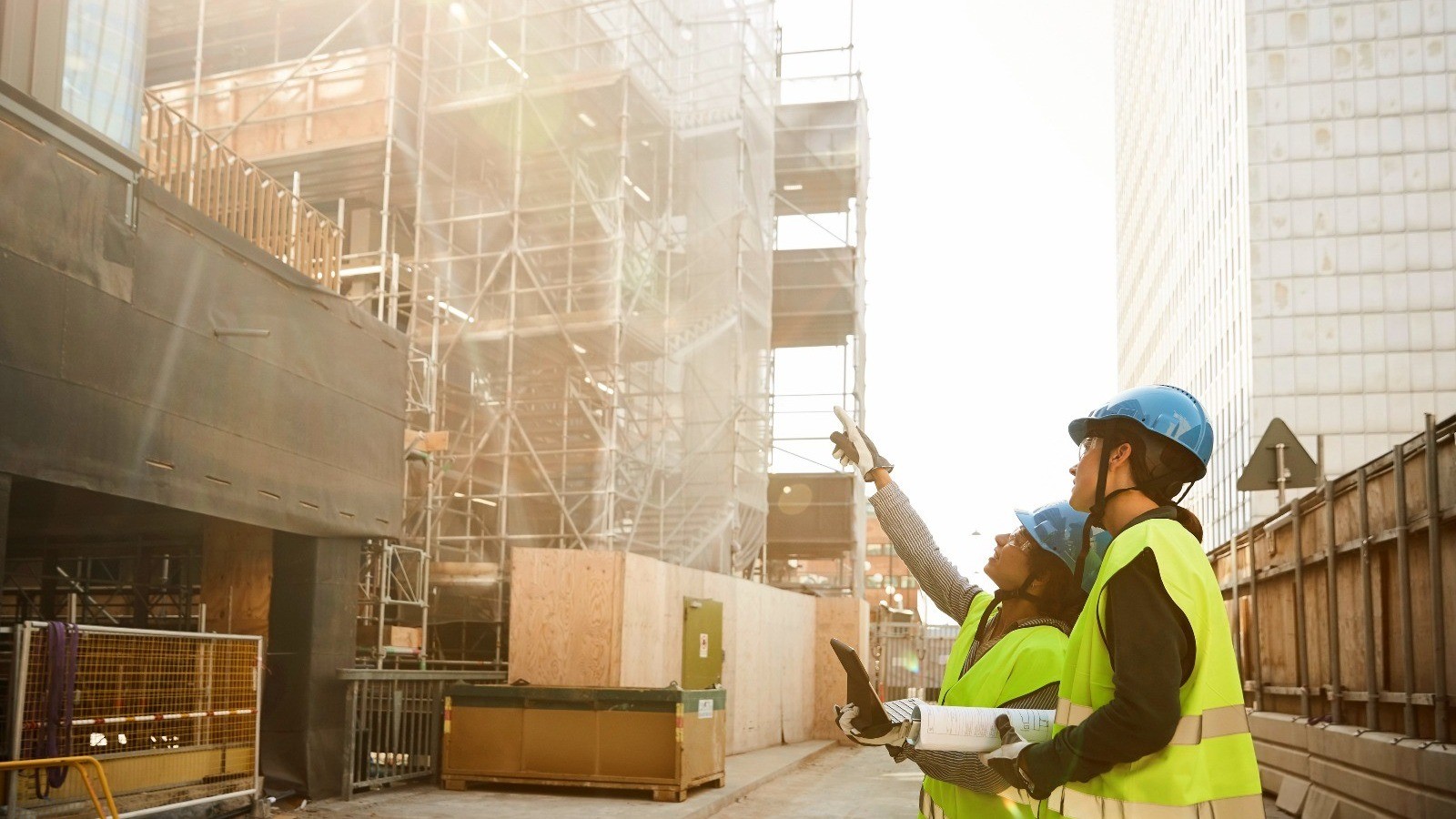At the start of 2025, we were cautiously optimistic: falling interest rates, a stabilising macroeconomic outlook, and ample capital raised hopes for a rebound in real estate M&A. Six months on, the picture is more nuanced. While investor appetite remains strong, deal activity is uneven – shaped by shifting interest rate expectations, global trade uncertainties, and a growing focus on fundamentals. Now in the second half of the year, we see no lack of capital, but a more strategic deployment of it. Investors are rethinking their return models, prioritising operational value creation, and broadening their geographic focus. In this mid-year update, we explore the key trends shaping global and Swiss real estate M&A in 2025 – and where capital is heading next.
Real estate and real asset investors remain eager to deploy capital, but the optimism seen at the start of 2025 has shifted to a more cautious stance. Concerns around interest rates, GDP growth, and trade policies have prompted some investors to pause. Still, underlying demand remains strong, and new opportunities are emerging – particularly in international markets such as Japan, India, and the Middle East.
In the first quarter of 2025, global real estate deal volume rose by 3% year-on-year, driven mainly by activity in the Americas and Asia Pacific. However, deal activity slowed in the second quarter, and may remain subdued through the second half of the year. We believe this does not reflect a lack of investor interest. On the contrary, capital is being reallocated more strategically, with growing attention to market fundamentals and global diversification. According to Preqin’s latest Investor Outlook, 34% of real estate investors and 37% of infrastructure investors plan to increase their capital commitments over the next 12 months – a strong signal that momentum is likely to return.
Key themes driving M&A activity in real estate and real assets in 2025
Rethinking real estate returns: operational value takes the lead
The era of cap rate compression as a driver of real estate returns has ended – at least for now – due to rising long-term interest rates and broader market shifts. Cap rate compression refers to falling capitalisation rates (net operating income divided by property value), which in the past allowed investors to benefit from rising asset prices even without increasing income. Today, higher capital costs and declining property values in sectors like office and select retail have made such passive appreciation strategies less effective. Instead, investors are pivoting to operational value creation – improving portfolio efficiency, optimising leasing, and repositioning assets to grow net operating income. As a result, M&A activity is now being driven by strategic deals that offer hands-on value creation and platform synergies.
Global shifts, local plays: where real estate capital is headed
Investors are focusing on asset classes and regions with strong fundamentals, sustainable rent growth, and resilient demand. This shift is creating divergence across sectors and geographies, and as demand in core real estate sectors becomes more uneven, location is playing a bigger role than ever. Understanding how trends vary by asset type and geography is key to tracking where – and why – capital is flowing globally:
The office sector is showing the widest variation across global markets. In cities such as Tokyo, Paris, and Sydney, demand is rebounding as investors focus on high-quality buildings in prime locations – a trend driven by the ongoing flight to quality. In the US, the picture is more mixed: while some areas show signs of recovery, others continue to struggle with weak leasing activity. Across all regions, outdated office buildings that no longer meet evolving workplace standards are raising concerns about asset obsolescence and long-term investment risk.
The multifamily sector remains highly attractive for its stability and resilient demand. Investor interest is expanding into underinvested regions including Asia Pacific and South America, as well as adjacent segments like student housing, co-living, and senior living, which share similar long-term drivers such as demographic trends, housing shortages, and recurring rental income.
Retail real estate is making a comeback after years of declining investor interest – especially in high-quality, experience-driven formats. In Europe, renewed foot traffic in prime locations is boosting performance. Properties that successfully combine physical and digital channels, last-mile logistics, and consumer data insights are outperforming. Meanwhile, niche segments focused on lifestyle, convenience, and experiential retail are also gaining investor attention.
The industrial sector is at a turning point, driven by trade tensions and proposed US tariffs that are accelerating reshoring and nearshoring trends. Investors are rethinking supply chains and reassessing existing assets. Construction remains strong in developed Asia and parts of Europe, reinforcing confidence in the sector. Meanwhile, data centres are expanding rapidly, with Europe seeing a surge and the US adjusting to policy shifts. Together, these trends are reshaping investor priorities across both traditional industrial assets and digital infrastructure.
Chasing growth: real estate capital moves beyond the US
While the US has long been the default destination for real estate investment, evolving trade and interest rate policies – along with currency volatility – are prompting investors to look more globally. As market fundamentals take precedence, capital is increasingly flowing to regions with favourable monetary policy, strong demographics, and long-term growth potential.
Diverging global interest rate trends are creating regional differences in capital costs. As some central banks raise rates and others cut them, investors are seeking geographies where lower rates support more attractive return profiles.
Amid growing uncertainty and the capital intensity of real estate and infrastructure projects, the investment horizon is becoming increasingly important. Investors are extending their timelines and focusing on long-term value creation.
Rapid urbanisation and rising wealth in regions such as Asia and the Middle East reflect favourable demographics and are driving demand for housing, offices, and supporting sectors such as retail and logistics – making these markets increasingly attractive for global capital.
Real estate deals 2025: stable volumes, cautious outlook
In the first half of 2025, global real estate transaction volumes remained broadly stable compared to 2024, with modest growth of around 2% year-on-year in the first quarter, followed by a slight contraction in the second quarter. The slowdown reflects increased caution amid trade tensions and divergent rate expectations rather than a lack of capital. In Switzerland, activity picked up modestly in the second quarter of 2025, driven by portfolio reallocations in multifamily and selective trades in prime office assets. However, the gap between buyer and seller price expectations remains a limiting factor.
And what will drive real estate M&A in Switzerland for the remainder of 2025?
The Swiss real estate M&A market in 2025 is being shaped by three main dynamics: persistently low interest rates, structural housing shortages, and the polarisation of the office market. Investor demand remains strong, but capital is being deployed with increasing selectivity. Multifamily assets and ESG-compliant office properties are at the centre of activity, while secondary office space and non-sustainable stock face significant discounts. Residential investment continues to attract capital flows, supported by rising rents and a robust demographic outlook.
At the same time, the financing environment is undergoing notable shifts. The merger of UBS and Credit Suisse has fundamentally altered the competitive landscape of the Swiss capital market. With fewer key lenders, the newly consolidated institution holds a stronger market position, while regional and cantonal banks seek to expand their footprint in real estate lending. Regulatory pressures remain high: the Basel III “Output Floor”, entering into force in 2025, raises equity requirements for banks and tightens lending criteria. As a result, financing for non-core and transitional assets has become more restrictive, whereas prime properties and green buildings continue to benefit from comparatively favourable terms.
Transaction activity, which remained subdued through most of 2024, is gradually recovering in 2025. Portfolio reallocations and selective trades in prime office and multifamily assets are driving volumes, though the bid-ask spread continues to constrain liquidity. Institutional investors are increasingly directing new capital into refurbishment projects to meet ambitious sustainability targets, while at the same time competing for the limited stock of certified green buildings. This has widened the valuation gap between sustainable and non-sustainable assets. In the medium term, demographic growth, urbanisation trends, and a scarcity of developable land are expected to sustain housing demand, ensuring that residential assets remain the backbone of Swiss real estate investment strategies.
“Amid evolving market conditions, the Swiss real estate sector is poised for renewed M&A activity. Falling interest rates are reinforcing the appeal of property investments, while capital deployment is becoming more strategic. Investors are focusing on resilient segments – particularly multifamily and sustainable office properties – whereas structurally weaker assets face growing challenges. The decisive drivers in 2025 are value creation and ESG compliance.”
Sebastian ZollingerDirector, Head Real Estate Advisory, PwC SwitzerlandM&A industry trends in Switzerland
Learn about the key trends driving M&A activity in Switzerland
Contact us
Sebastian Zollinger








